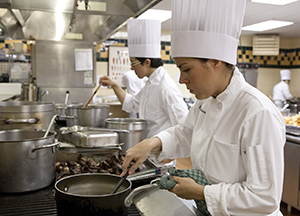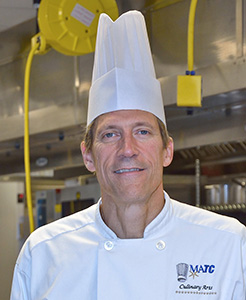Guest Speaker: How I Would Change the World through Food
Tuesday, 07 October 2014 13:29
 On its 80th anniversary, Kendall College’s president envisions a future in which everyone worldwide with a passion for food may pursue their dreams to cook professionally.
On its 80th anniversary, Kendall College’s president envisions a future in which everyone worldwide with a passion for food may pursue their dreams to cook professionally.
By Emily Williams Knight
Kendall College’s School of Culinary Arts exists to create agents of change, not only in Chicago and the Midwest, but across the country and globe. We teach people with a passion for food how to put that passion in play in ways that extend far beyond creating convivial social experiences for people.
Our graduates have the power to greatly enhance a community’s health and well-being. They leave our campus with ardent commitment to serving and protecting the environment that sustains us. These newly minted professionals, trained in the art of culinary and the business of securing and preparing high-quality food for others, can also help alleviate that which keeps populations worldwide adequately fed yet severely malnourished.
Given the immense potential of trained culinarians to bring significant, positive change to all corners of the planet, we in the United States and many other nations are fortunate that a relatively newfound respect for chefs coupled with increasing love of and fascination with all things culinary extends throughout our respective cultures—making it easier to enact real, worthwhile change.

 A new degree is designed to prepare graduates to influence the future of food.
A new degree is designed to prepare graduates to influence the future of food. This second in a two-part series on teaching culinary arts through ratios in practical culinary labs focuses on incorporating ratios into your lesson plan.
This second in a two-part series on teaching culinary arts through ratios in practical culinary labs focuses on incorporating ratios into your lesson plan.